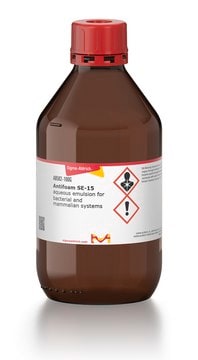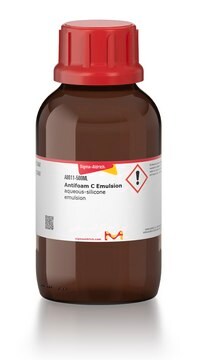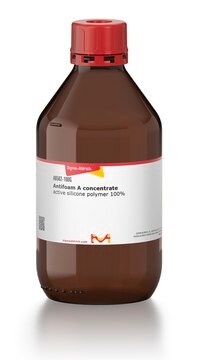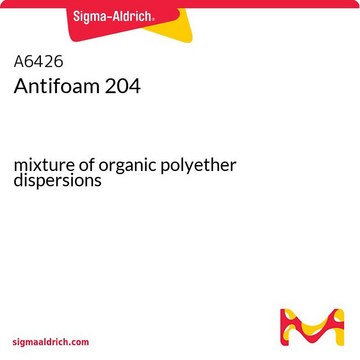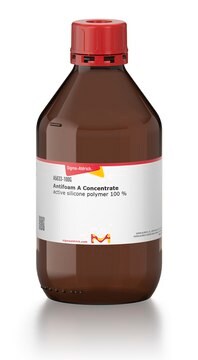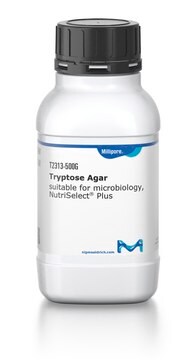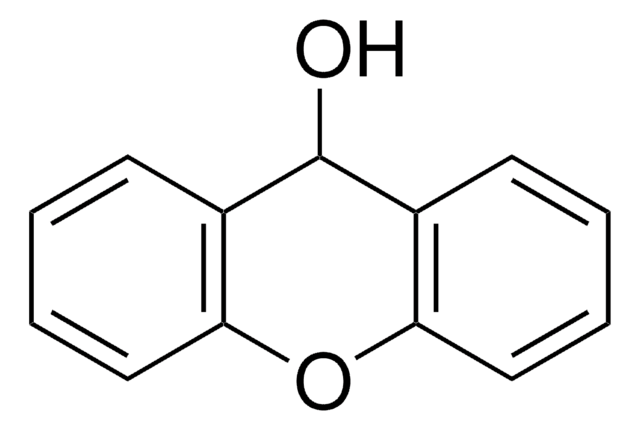A5758
Antifoam Y-30 Emulsion
aqueous-silicone emulsion
About This Item
Recommended Products
General description
Application
- Chemostat cultivation.
- Cultivation conditions, such as Fed-batch fermentation.
- Bacterial strains and growth conditions (used in all aerosol experiments).
Other Notes
Linkage
Storage Class Code
10 - Combustible liquids
WGK
WGK 3
Flash Point(F)
Not applicable
Flash Point(C)
Not applicable
Personal Protective Equipment
Regulatory Listings
Regulatory Listings are mainly provided for chemical products. Only limited information can be provided here for non-chemical products. No entry means none of the components are listed. It is the user’s obligation to ensure the safe and legal use of the product.
PDSCL
Deleterious substance
ISHL Notified Names
Substances Subject to be Notified Names
JAN Code
A5758-BULK:
A5758-500ML-C:
A5758-250ML:
A5758-500ML:
A5758-VAR:
A5758-100ML:
Certificates of Analysis (COA)
Search for Certificates of Analysis (COA) by entering the products Lot/Batch Number. Lot and Batch Numbers can be found on a product’s label following the words ‘Lot’ or ‘Batch’.
Already Own This Product?
Find documentation for the products that you have recently purchased in the Document Library.
Customers Also Viewed
Our team of scientists has experience in all areas of research including Life Science, Material Science, Chemical Synthesis, Chromatography, Analytical and many others.
Contact Technical Service